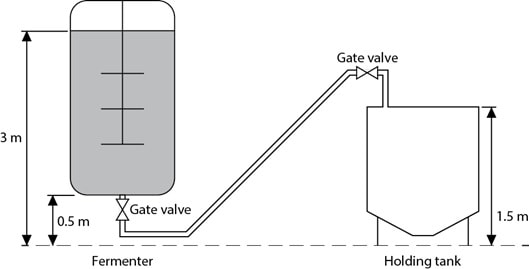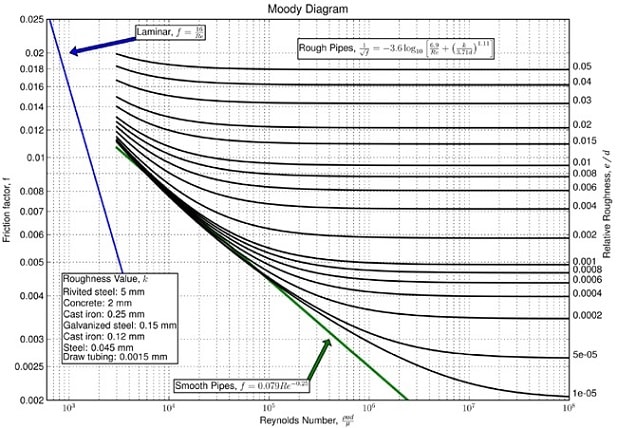BENG1006 - Introduction to Biochemical Engineering Processing and Design
Coursework 1
Answer all TWO questions
1. A capillary rheometer is used to measure the viscosity of a fermentation broth. The capillary has an internal diameter of 0.5 mm and is 6 cm long. A pressure transducer is used to monitor the pressure drop across the capillary under different flow rates. The different flow rates tested, their corresponding shear rate and recorded pressure drop are shown in the table below.
Q (m³ s-1) | γ (s-1) | ΔP (Pa) |
6.000×10-8 | 4889 | 25820 |
1.200×10-7 | 9778 | 36140 |
3.000×10-7 | 24450 | 58670 |
6.000×10-7 | 48890 | 82140 |
1.200×10-6 | 97790 | 98570 |
- What type of flow would you expect to observe in the capillary rheometer?
- Calculate the apparent viscosity of the broth for each flow rate and determine the type of fluid. Check any assumptions made.
- Plot the rheogram and determine the rheological parameters of this fluid.
- Explain which changes in the fermentation broth might have caused the rheological properties observed.
2. A fermenter requires a new pipeline to transfer the cell suspension to a holding tank, where it will be stored prior to downstream processing. The proposed pipeline is 20 m long and is laid out as shown in the diagram below. The contents of the fermenter will need to be transferred to the holding tank in 30 minutes. The density of the cell suspension is 1050 kg m-³ and the viscosity is 0.005 Pa s. The fermenter has a total volume of 6.25 m³ and is operated with a volumetric space efficiency of 0.8.
 Diagram not to scale
Diagram not to scale Pipe diameter (m) |
0.04 |
0.08 |
0.12 |
Selection of pipe diameters available.
- What type of flow regime do you expect in the transfer pipe and why?
- You have a choice of stainless steel piping in three different diameters (ε = 0.0015 mm). Select a diameter suitable to achieve the type of flow you expect in this pipe.
- The flow through the transfer pipe will be driven by pressurising the headspace of the fermenter. Calculate the pressure required to transfer the cell suspension at the conditions above. State any assumptions made.
- If the flow needs to be maintained at a constant rate throughout the transfer, how will the pressure applied to the headspace have to change? Calculate the maximum pressure required.
(A Moody diagram and table of friction loss factors is provided in the appendix)
Appendix to BENG103P exam paper

|
Bend/Fitting type |
Velocity heads (K) |
Length equivalents (Le) |
|
Pipe inlet |
1.0 |
45dp |
|
Pipe outlet |
0.5 |
22dp |
|
90° square elbow |
0.9 |
41dp |
|
45° bend |
0.35 |
15dp |
|
Open gate valve |
0.85 |
40dp |
Topics in Biotechnology
- Biochemistry
- Microbiology
- Analytical Methods
- Bioprocess Calculations
- Bioinformatics
- Carbohydrates and Lipids
- Enzyme Engineering and Technology
- Enzyme Catalysed Organic Synthesis
- Food Processing
- Genetics
- Molecular Biology
- Modelling and Simulation of Bio processes
- Metabolic Regulation and Engineering
- Physical and Chemical Properties of Biomolecules
- Solid State Cultivation
- Thermodynamics of Biological Systems

